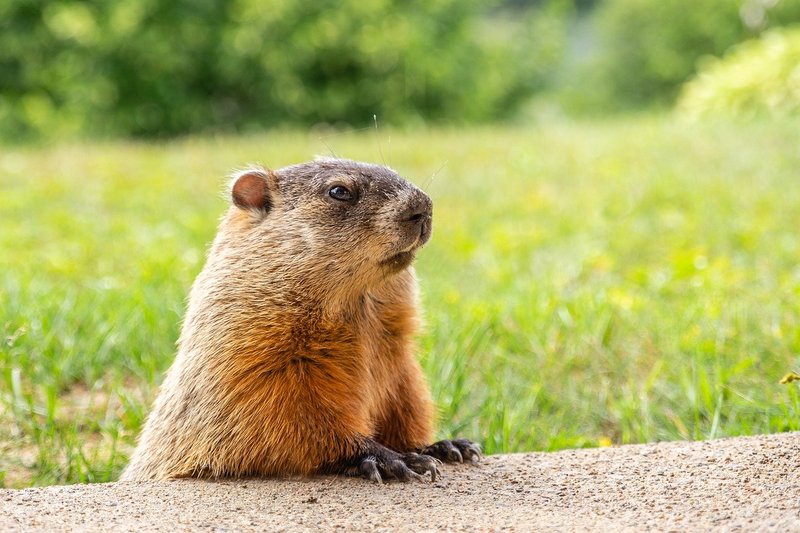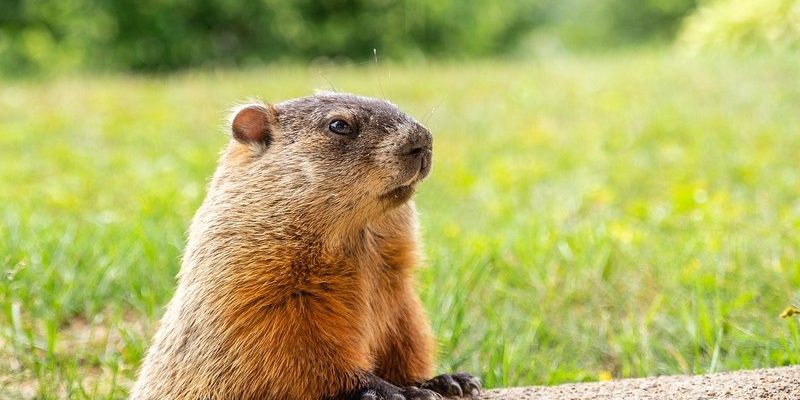
Imagine walking through a forest or a field where groundhogs live. You might feel the gentle breeze on your face and hear the rustling of leaves. You might not notice them at first, hidden in their burrows, but their presence is felt all around. Groundhogs, with their playful antics, are a key part of this ecosystem, and understanding their role helps us appreciate the delicate balance of nature that benefits all living things.
What is a Groundhog?
Groundhogs are large rodents, belonging to the family Sciuridae. They typically weigh between 5 to 14 pounds and have a chunky body with a short, bushy tail and thick fur. These animals are mainly found in North America, thriving in areas with plenty of grass, fields, and light forests. They are herbivores and enjoy munching on a variety of plants, including clover, dandelions, and even garden vegetables if they get the chance.
You might be wondering how these adorable creatures got their name. “Woodchuck” comes from a Native American term, “wuchak,” which may not make sense until you see their burrowing habits. They dig extensive tunnel systems underground, which serve multiple purposes, like keeping them safe from predators and providing a place to store food.
The Role of Groundhogs in Soil Aeration
One of the most significant roles groundhogs play in their ecosystem is soil aeration. When they dig their burrows, they break up the soil, allowing air and water to reach plant roots more easily. This aeration process is similar to how a gardener might till the earth to prepare it for planting.
By creating these networks of tunnels, groundhogs help to improve the soil structure. The digging not only creates space for plant roots to grow but also encourages the activity of soil organisms, like earthworms and beneficial bacteria. These creatures enrich the soil, helping to support healthy plant growth.
Groundhogs also contribute to the nutrient cycle. As they eat plants and then excrete waste, they help return vital nutrients back to the soil. So, the next time you see a groundhog, keep in mind that they’re not just cute; they’re working hard to keep the earth healthy and thriving.
Groundhogs as Prey in the Food Chain
In the grand scheme of nature, every creature has its role, and groundhogs are no exception. They are a vital food source for various predators, including foxes, coyotes, and birds of prey like hawks and eagles. This means that groundhogs help support a diverse range of wildlife in their ecosystems.
You might be surprised to learn that while they’re mainly herbivorous, groundhogs can sometimes be preyed upon by snakes and even domestic pets. Their presence provides essential nutrients to these predators, making groundhogs a crucial link in the food chain. When groundhog populations are healthy, it can lead to thriving populations of these predators, which helps maintain balance in the natural world.
Groundhogs and Plant Diversity
Groundhogs play a significant role in maintaining plant diversity. As they voraciously munch through various plants, they help control plant growth. By selectively feeding on certain plants, they influence which species thrive in their habitats. This action can prevent a few dominant species from overtaking an area, which allows for a wider range of plants to flourish.
This is particularly important in maintaining the health of grasslands and meadows. Without groundhogs, some plants could easily overpopulate, leading to reduced biodiversity. So, you could say groundhogs serve as little landscapers in their environments—shaping and maintaining the landscape.
It’s easy to overlook how interconnected nature is, but groundhogs help demonstrate this interdependence. They have a hand in the survival of many other species, from plants to insects that rely on those plants for food.
Impact on the Ecosystem: A Balance of Life
Groundhogs contribute to the ecosystem’s balance in various ways that may not be immediately obvious. For instance, their burrowing activities create shelters for other smaller animals, like rabbits or snakes. It’s a bit like a community center for wildlife, offering safe havens and places to hide from predators.
Moreover, groundhogs can affect the behavior of other species in their area. The presence of groundhogs can signal to other animals where food might be plentiful, as many creatures are opportunistic feeders. This can lead to increased biodiversity as more species come to rely on the area that groundhogs inhabit, ultimately supporting a more vibrant ecosystem.
The interconnections in nature are intricate and fascinating, showing us how a single species, like the groundhog, can have a wide-reaching impact. It’s a gentle reminder that every creature has its value, no matter how big or small.
Human Interaction and Groundhog Conservation
As much as groundhogs contribute to their ecosystems, they face threats from human activities. Habitat loss due to urban development and agriculture can significantly impact their populations. You might be wondering what steps we can take to help these lovable creatures thrive.
One way to support groundhogs is by preserving their natural habitats. By creating green spaces and wildlife corridors, we can help maintain healthy populations. Additionally, educating others about the role of groundhogs in the ecosystem can encourage respect and appreciation for these creatures.
Moreover, if you have a garden, consider using humane deterrents rather than traps or poison. Groundhogs can be pesky, especially when they raid your tomatoes, but they’re much more valuable in the long run when left to maintain their role in the ecosystem.
In many ways, groundhogs are the unsung heroes of their ecosystems. They aerate the soil, provide food for predators, and help maintain plant diversity, all while creating a unique community for various species. Their burrowing activities not only impact the environment right around them but ripple throughout the entire ecosystem.
Understanding the role of groundhogs helps us appreciate the balance of nature and the importance of each species. So next time you see a groundhog peeking out from its burrow, remember that it’s doing much more than just popping up to say hello. Groundhogs are fundamental players in their ecosystems, and protecting them helps ensure a diverse and thriving environment for future generations.

